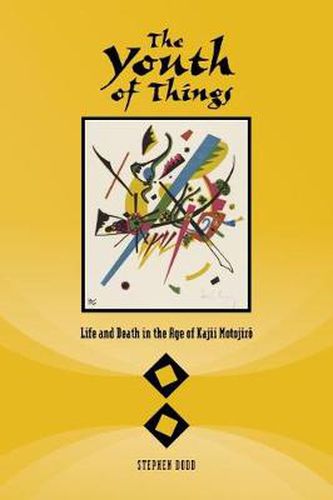Readings Newsletter
Become a Readings Member to make your shopping experience even easier.
Sign in or sign up for free!
You’re not far away from qualifying for FREE standard shipping within Australia
You’ve qualified for FREE standard shipping within Australia
The cart is loading…






When he died from tuberculosis at the age of thirty-one, Kajii Motojir_ had written only twenty short stories. Yet his life and work, it is argued here, sheds light on a significant moment in Japanese history and, ultimately, adds to our understanding of how modern Japanese identity developed. By the time Kajii began to write in the mid-1920s there was heated debate among his peers over OlegitimateO forms of literary expression: Japanese Romantics questioned the value of a western-inspired version of modernity; others were influenced by Marxist proletarian literature or modernist experimentation; still others tried to create a distinctly Japanese fictional style that concentrated on first-person perspective, the so-called OI-novel.O There was a general sense that Japan needed to reinvent itself, but writers and artists were at odds over what form this reinvention should take.
The Youth of Things is the first full-length book devoted to_ Kajii Motojir_. It brings together English translations of nearly_all his completed stories with an analysis of his literature in the context of several major themes that locate him in 1920s Japan._ In particular, Dodd links the writer’s work with the physical body: Kajii’s subjective literary presence was grounded first and foremost in his TB-stricken physical body, hence one cannot be studied with- out the other. His concerns with health and mortality drove him to play a central role in constructing a language for modern literature and to offer new insights into ideas that intrigued so many other Taish_ intellectuals and writers.
In addition, Kajii’s early years as a writer were strongly influenced by the cosmopolitan humanism of the White Birch (Shirakaba) school, but by the time his final work was published in the early 1930s, an environment of greater cultural introspection was beginning to take root. This book offers some sense of the demise of one cultural moment and the creation of another.
$9.00 standard shipping within Australia
FREE standard shipping within Australia for orders over $100.00
Express & International shipping calculated at checkout
When he died from tuberculosis at the age of thirty-one, Kajii Motojir_ had written only twenty short stories. Yet his life and work, it is argued here, sheds light on a significant moment in Japanese history and, ultimately, adds to our understanding of how modern Japanese identity developed. By the time Kajii began to write in the mid-1920s there was heated debate among his peers over OlegitimateO forms of literary expression: Japanese Romantics questioned the value of a western-inspired version of modernity; others were influenced by Marxist proletarian literature or modernist experimentation; still others tried to create a distinctly Japanese fictional style that concentrated on first-person perspective, the so-called OI-novel.O There was a general sense that Japan needed to reinvent itself, but writers and artists were at odds over what form this reinvention should take.
The Youth of Things is the first full-length book devoted to_ Kajii Motojir_. It brings together English translations of nearly_all his completed stories with an analysis of his literature in the context of several major themes that locate him in 1920s Japan._ In particular, Dodd links the writer’s work with the physical body: Kajii’s subjective literary presence was grounded first and foremost in his TB-stricken physical body, hence one cannot be studied with- out the other. His concerns with health and mortality drove him to play a central role in constructing a language for modern literature and to offer new insights into ideas that intrigued so many other Taish_ intellectuals and writers.
In addition, Kajii’s early years as a writer were strongly influenced by the cosmopolitan humanism of the White Birch (Shirakaba) school, but by the time his final work was published in the early 1930s, an environment of greater cultural introspection was beginning to take root. This book offers some sense of the demise of one cultural moment and the creation of another.